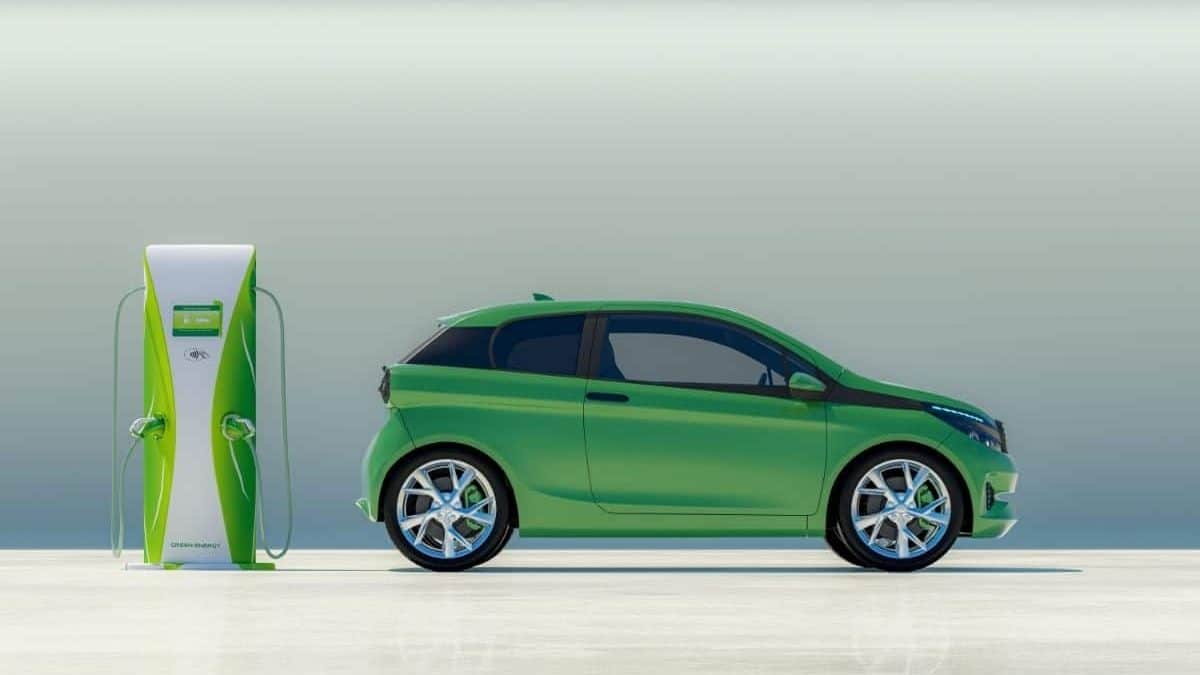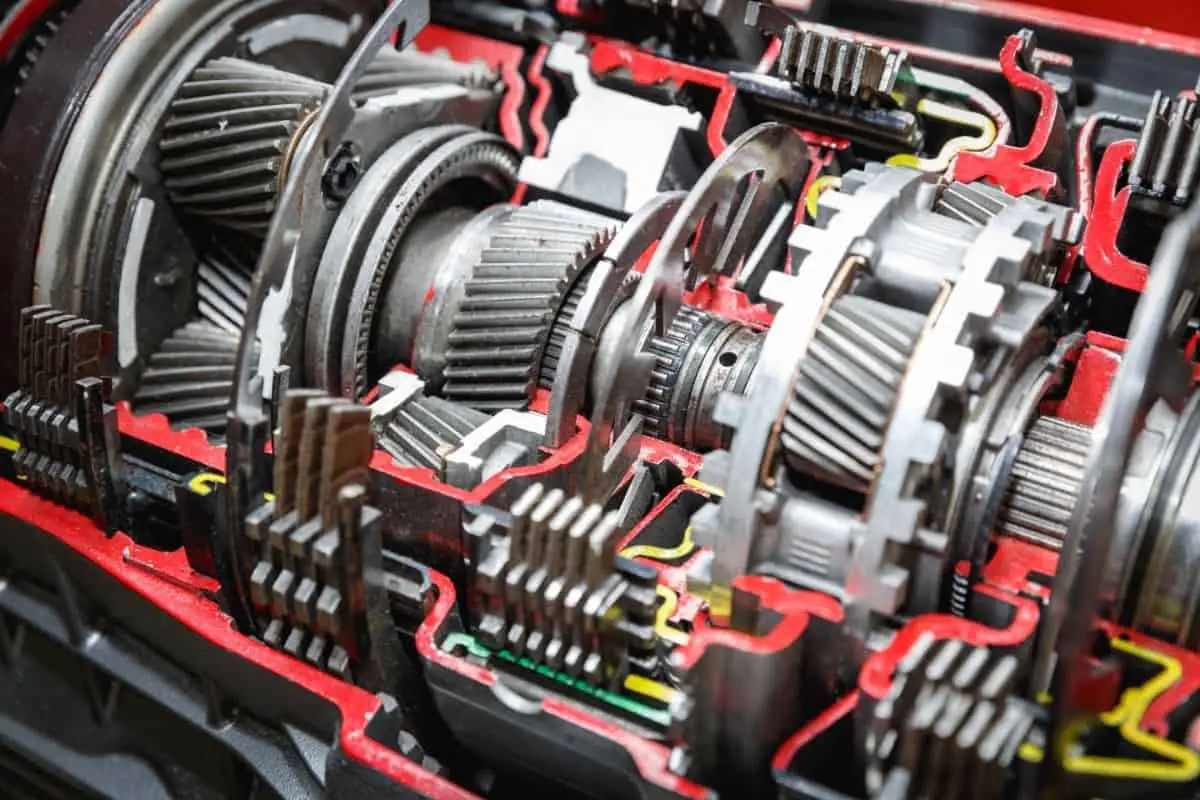Naturally, electric vehicles differ from conventional combustion engine vehicles in a number of important ways.
One thing you might be wondering is whether or not electric cars have transmissions.
This can be a pretty tricky question to clarify, as different people will tell you slightly different things.
However, the answer is both yes, and no..

To be clear from the offset, electric cars do not have transmissions in the sense that we use the word “transmission”, when referring to a traditional car’s system of gears.
But electric vehicles do have transmissions in a different, technical sense.
If you’re interested in clearing up the confusion, join us as we discuss transmissions in electric cars.
To begin, we think it’ll be helpful to go over the specifics of what a transmission does, discuss how the motor in an electric car delivers power to the wheels, and how the speed is controlled using this system.
What Is A Transmission?
We could quite easily get bogged down in mechanical jargon here, but we’ll keep it simple.
In common parlance, the transmission on a car is the car’s gearbox- the part of the engine that shifts the gears to allow the car to travel comfortably at a range of different speeds and in reverse, too.
Why does an internal combustion engine need different gears? To put it simply, it only generates power efficiently at certain RPM ranges.
To keep operating efficiently at certain speeds, you have to shift up and down the gears.
A transmission can either be manual, where the driver uses the clutch pedal to shift gears themselves, or automatic, where the car shifts gears on its own.
In America, most cars are automatic. However, even so-called automatic transmission cars still generally have a stick shift with drive, park, and reverse settings.
Do Electric Vehicles Have Transmissions?
Yes, they do. Well, sort of. You might be wondering how that can be, as many electric cars do not even have a gear lever or stick to allow you to change gears.
Well, electric cars do have a transmission because, in a strictly mechanical sense, every vehicle has to have a transmission in order to move under its own power.
That’s because a transmission, or transmission machine, does just that- it transmits power to the wheels.
What is true, though, is that electric cars don’t have transmissions as seen in vehicles with internal combustion engines, which are called multi-speed transmissions.
Electric cars naturally don’t require a multi-speed transmission because they don’t have internal combustion engines.
Instead, the ‘engine’ of an electric car is an electric motor, which is a very different method of delivering power.
Unlike the engine in your petrol or diesel-powered car, the motor in an electric car doesn’t need to shift gears to keep the car running efficiently.
This is because electric motors deliver power instantly and deliver a consistent amount of torque- or rotational force- at any given RPM within a set range.
The manufacturers of electric cars use a complex set of calculations to work out so-called ‘gear ratios’ for their electric cars to keep them running as efficiently as possible without any need to switch gears.
Basically, a multi-speed transmission just isn’t necessary in an electric car.
The majority of electric motors used in electric vehicles can operate up to 10,000 RPM or more, and produce consistent torque across this extensive range.
Most cars with internal combustion engines have a max RPM of around 6,000, with the engine only able to run consistently in narrow RPM ranges and in the right gear.
For petrol and diesel cars, a multi-speed transmission is a functional necessity, whereas on an electric car it would be a pointless inefficiency.
Electric cars still need a gear- or transmission- to allow the motor, and thus the wheels to run at different speeds, but with a wide RPM range a single gear is enough to transfer power to the wheels from the motor over the whole possible speed range of the car.

Can Electric Cars Have Multiple Gears?
That’s not to say that electric cars can’t have more than one gear. The Porsche Taycan, for example, has a two-speed gearbox.
Instead, some electric cars have two motors, one in the front of the car and one in the rear.
By using different gear ratios, the motors, each with a single gear, achieve different results. This is almost like the gears in a conventional car.
The smaller, front-mounted motor is designed for efficiency, whilst the larger, rear-mounted motor is designed to provide raw power.
Naturally, this means that the car utilizes the rear motor for maximum acceleration.
Once cruising speed is achieved, the car can then divert power to the front motor for its enhanced efficiency.
In some cases, the rear motor is completely disengaged and only re-engaged when you press the accelerator pedal down further for more speed.
Will Electric Vehicles Have More Gears In The Future?
It’s certainly possible that electric vehicles will come with more gears in the future.
As we’ve already alluded to, some newer EVs already do, with more in the pipeline, including the planned Jeep Magneto.
In fact, Formula E electric racing cars already have transmissions.
There’s talk that electric trucks, too, will have multiple gears when they are launched, although it may be as few as two gears; one for acceleration and one for cruising.
Old school driving enthusiasts want a multi-speed transmission in order to improve the driving experience, as they believe it gives them a ‘feel’ for the car.
However, the question is whether, in the bigger picture, electric cars will benefit from more gears.
It’ll make the engineering of EVs more complex, make the cars heavier, and make the cars more costly, both in terms of upfront costs and ongoing maintenance.
Final Thoughts
Electric cars do not generally have transmissions in the traditional, multi-speed sense because they are powered by electric motors rather than internal combustion engines.
Instead, most EVs have single-speed transmissions, although this may change in the future.
- Tesla Charger Installation Cost (Home Setups) - March 1, 2024
- Tesla Phone Key Disconnected (Troubleshooting Guide and Quick Fixes) - March 1, 2024
- Tesla FSD 12 (Explained) - March 1, 2024